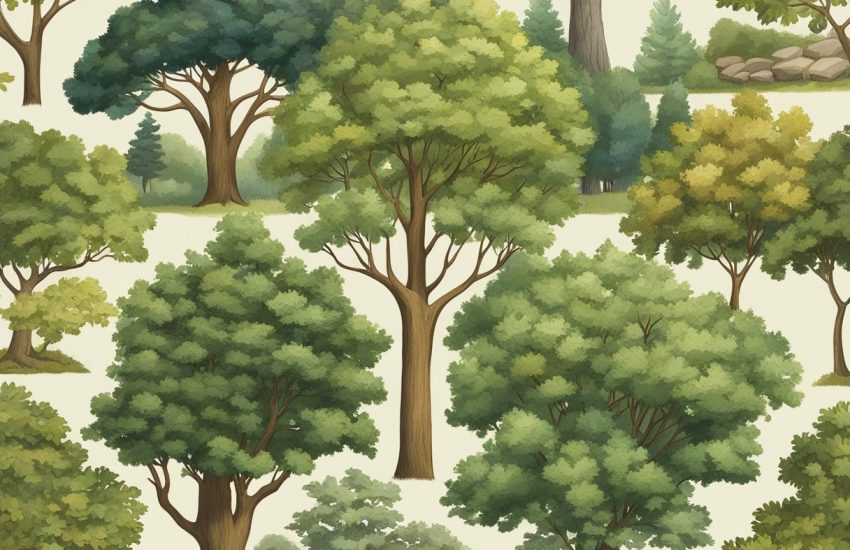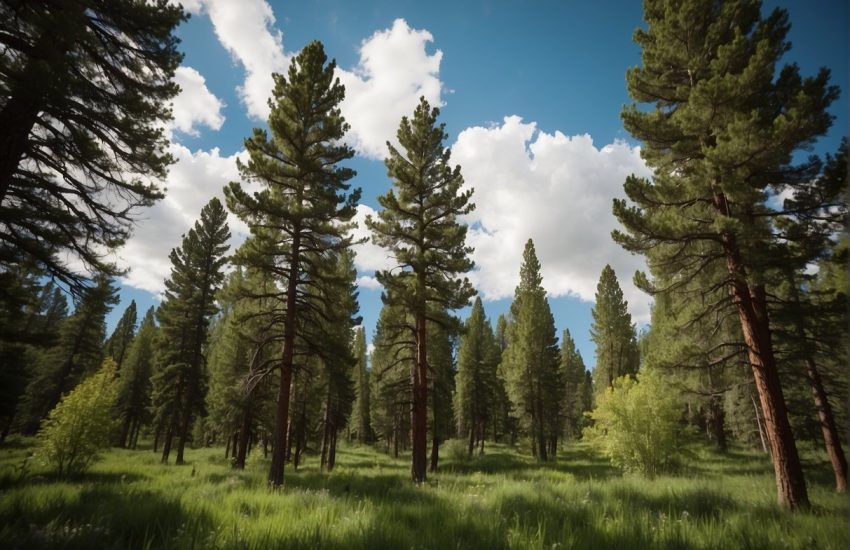Popular Trees in South Carolina: A Guide to the State’s Most Common Species
South Carolina is a state known for its lush greenery and diverse ecosystem, with a variety of trees that are native to the region. From the towering longleaf pine to the delicate dogwood, there are many popular trees that can be found throughout the state. These trees not only add to the natural beauty of the landscape, but also play a vital role in maintaining the health and balance of the ecosystem.

One of the most iconic trees in South Carolina is the palmetto, which can be seen on the state flag and is a symbol of resilience and strength. This tree is native to the coastal regions of the state and is known for its ability to withstand hurricane-force winds. Another popular tree in South Carolina is the live oak, which can be found throughout the state and is often used in landscaping due to its attractive appearance and ability to provide shade.
Overall, the trees of South Carolina are an important part of the state’s landscape and ecosystem. Whether you are a nature enthusiast or simply appreciate the beauty of the natural world, there is no denying the significance of these trees and the role they play in shaping the environment.
Native Trees and Their Ecosystems

South Carolina is home to a diverse range of native trees that play a crucial role in the state’s ecosystems. These trees provide habitat and food for wildlife, help to regulate the climate, and contribute to the overall health of the environment. In this section, we will explore some of the most common native trees in South Carolina and their roles in the state’s ecosystems.
Deciduous Trees of South Carolina
Deciduous trees are those that lose their leaves in the fall and regrow them in the spring. South Carolina is home to several species of deciduous trees, including the red maple, American beech, sycamore, and oak tree. These trees provide important habitat for wildlife, including birds, squirrels, and other small mammals. They also help to regulate the climate by absorbing carbon dioxide and other pollutants from the air.
One of the most distinctive features of deciduous trees is their leaves. Leaves come in a variety of shapes and sizes, and can be used to identify different species of trees. The bark and branches of deciduous trees also provide important habitat for wildlife, including insects and spiders.
Unfortunately, many deciduous trees in South Carolina are susceptible to diseases and pests. For example, oak trees are often affected by oak wilt, a fungal disease that can kill the tree. Sycamores are susceptible to anthracnose, a fungal disease that can cause leaf blight and defoliation.
Evergreen Species and Their Roles
Evergreen trees are those that retain their foliage throughout the year. South Carolina is home to several species of evergreen trees, including the sabal palm, cabbage palm, and bald cypress. These trees provide important habitat and shelter for wildlife, including birds, reptiles, and small mammals. They also help to regulate the climate by absorbing carbon dioxide and other pollutants from the air.
One of the most distinctive features of evergreen trees is their foliage. Evergreen trees have leaves that are typically smaller and more needle-like than those of deciduous trees. The bark and branches of evergreen trees also provide important habitat for wildlife, including insects and spiders.
Overall, native trees play a crucial role in the ecosystems of South Carolina. They provide habitat and food for wildlife, help to regulate the climate, and contribute to the overall health of the environment. By understanding the roles that these trees play in the state’s ecosystems, we can better appreciate and protect them for future generations.
Human Interaction and Conservation

Urban Landscaping and Trees
South Carolina’s urban areas, such as Charleston, are known for their beautiful tree-lined streets and parks. Trees provide shade, privacy, and aesthetic value to the landscape. Many common trees in South Carolina, such as oak, magnolia, and dogwood, are popular choices for urban landscaping due to their beauty and tolerance to urban conditions.
However, the urban environment can also pose challenges to trees. Air pollution, disease, and pests can harm trees and reduce their lifespan. To ensure the health and longevity of urban trees, it is important to implement proper maintenance practices, such as regular pruning and fertilization.
Threats and Preservation Efforts
South Carolina’s trees also face threats from lumbering and development. The state has a rich history of forestry, but unsustainable practices have led to the decline of native species and ecosystems.
To address these issues, conservation efforts have been implemented to protect native species and preserve the environment. The Congaree National Park, for example, is home to some of the tallest trees in the eastern United States and is an important area for conservation and research.
Efforts to combat disease and pests, such as the emerald ash borer, have also been implemented to protect South Carolina’s trees. The state tree, the Palmetto, is a symbol of resilience and has been a focus of conservation efforts due to its historical and cultural significance.
Overall, human interaction with South Carolina’s trees plays a crucial role in the conservation and preservation of the state’s ecosystem and landscape. Proper maintenance and conservation efforts can ensure the health and longevity of trees for future generations to enjoy.


